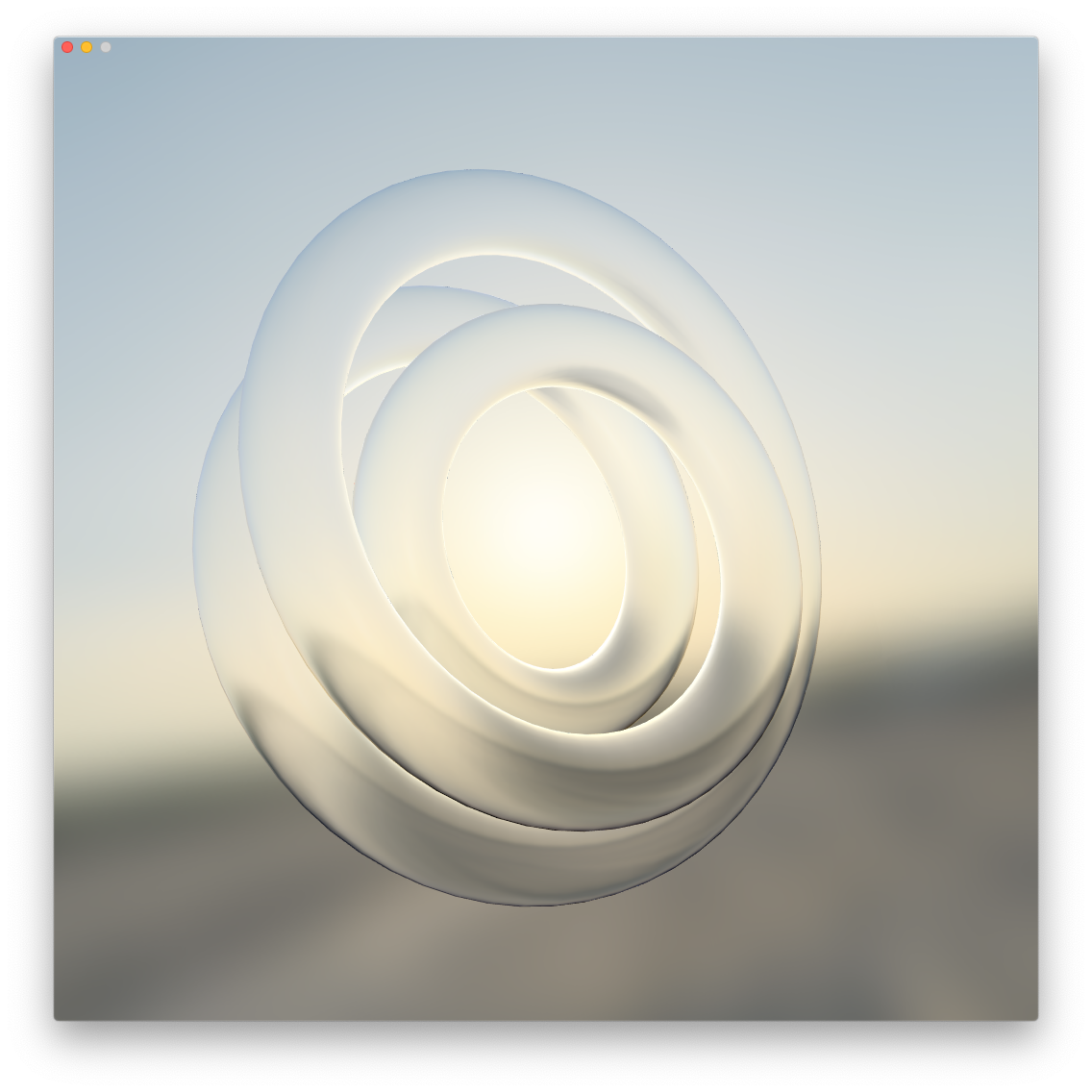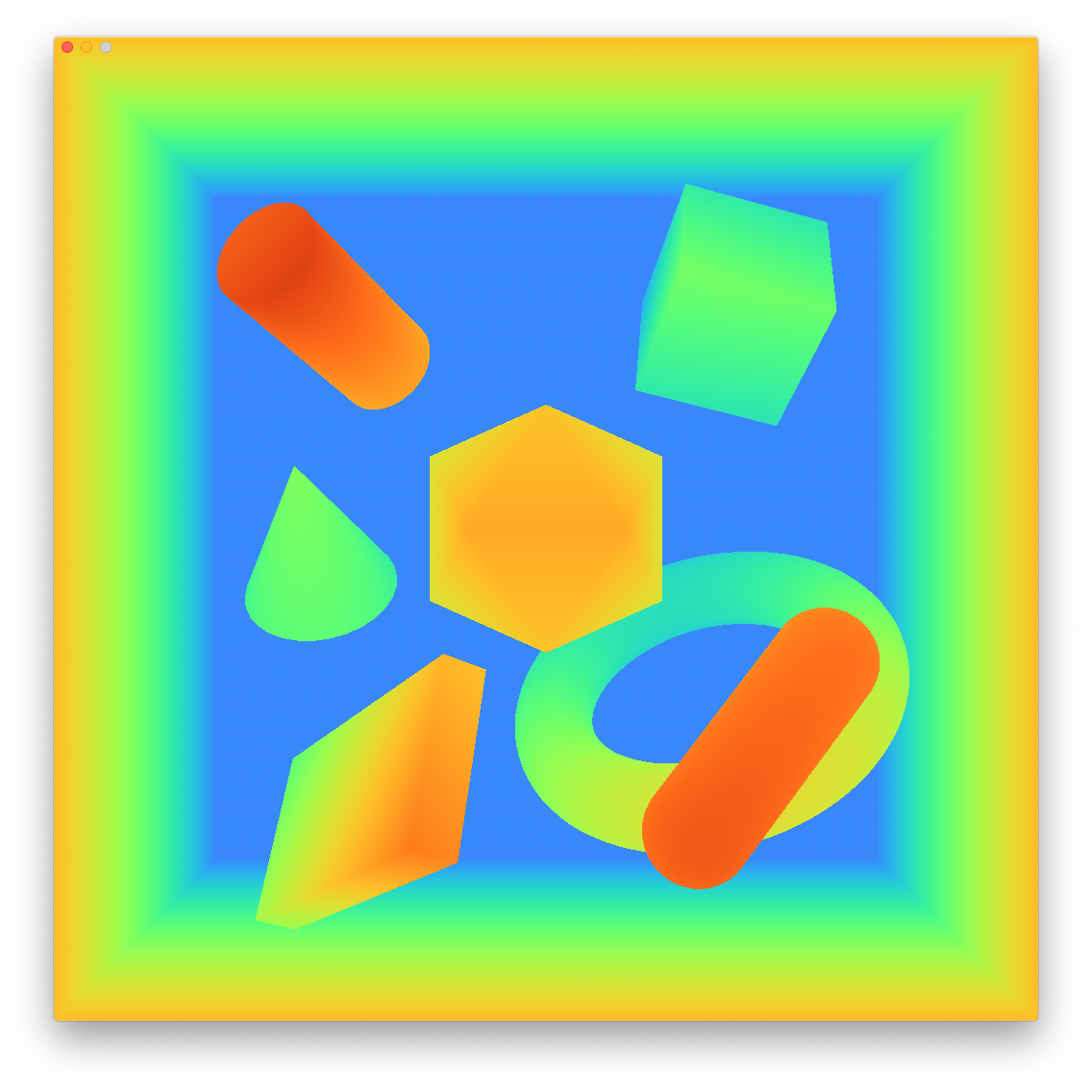Satin is a 3D graphics framework (inspired by threejs) that helps designers and developers work with Apple's Metal API. Satin provides helpful classes for creating meshes, materials, buffers, uniforms, geometries, pipelines (shaders), compute kernels, and more. Satin's API is rapidly evolving so its best to stick to a tagged version or git commit when using it in production.
Satin makes simple graphics tasks fun and easy to accomplish quickly and complex graphics tasks easier to accomplish without having to write tons of boilerplate code. It does this by providing structure, opinions, and tons of helpful abstractions on Metal to help you get up and rendering / coding in a few minutes. Satin is mostly Swift based, however when performing expensive CPU operations, Satin uses SatinCore, which is written in C (for tasks like geometry generation, triangulation, bounds & computational geometry calculations, and more) to make sure things are as fast as possible. That being said, if you are looking for the most performant way to render things with Metal, please check out Metal-cpp or Metal directly via Objective-C.
Satin is no longer in active development.
- macOS 10.15.
- Xcode 11.0.
- Swift 5.0.
- macOS 10.15.
- iOS 13.0.
- tvOS 13.0.
Swift Package Manager is a tool for automating the distribution of Swift code and is integrated into the Swift compiler. Once you have your Swift package set up, adding Satin as a dependency is as easy as adding it to the dependencies value of your Package.swift.
dependencies: [
.package(url: "https://github.com/Hi-Rez/Satin.git", .branch("master"))
]- Tons of examples that show how to use the API (2D, 3D, Raycasting, Compute, Exporting, Live Coding, AR, etc).
- Object, Mesh, InstancedMesh, Material, Shader, Geometry and Renderer classes.
- PBR Standard & Physical Materials (Based on Disney's PBR Implementation)
- You can live code shaders 🔥.
- A couple builtin Materials (BasicColor, BasicTexture, BasicDiffuse, Normal, UV Color, Skybox, MatCap, PBR Standard, PBR Physical, and more).
- Tons of Geometries (Box, Sphere, IcoSphere, Circle, Cone, Quad, Plane, Capsule, RoundedRect, Text, and more).
- Cameras (Orthographic, Perspective).
- 2D & 3D Camera Controllers.
- Run-time & Dynamic Struct creation via Parameters for Buffers and Uniforms.
- Metal Shader Compiler (useful when live coding), used in LiveShader (which is used in LiveMaterial).
- Buffer & Texture Compute Systems for crunching data fast and hard.
- Generators for BRDF LUT, Image Based Lighting (HDR -> Specular & Diffuse IBL Textures)
- Fast raycasting via Bounding Volume Hierachies (very helpful to see what you clicked or tapped on).
- Hooks for custom Metal rendering via Mesh's preDraw, Material's onBind, Buffer & Texture Computes' preCompute, etc
- Hooks for custom Renderable via Renderable protocol
- FileWatcher for checking if a resource or shader file has changed.
- Tons of examples to show how to use the API.
- Examples that show how to use Satin & ARKit
- Basic Directional Shadows
Satin helps to draw things with Metal. To get up and running quickly without tons of boilerplate code and worrying about triple buffering or event (setup, update, resize, key, mouse, touch) callbacks, Satin pairs well with Forge, but can be used without it. The example below shows how to used Forge & Satin together to render a color changing box that looks at a moving point in the scene.
import SwiftUI
import MetalKit
import Forge
import Satin
// Subclass Forge's Renderer to get triple buffered rendering and
// callbacks for Setup, Update, Draw, Resize and Events
class SimpleRenderer: Forge.Renderer {
// A Context contains important information that is needed to help compile shaders
// and ensure we are drawing with the right color and depth pixel formats and sample count
// Forge's Renderer class provides a MTLDevice and convenience getters for the view's color pixel format,
// depth pixel format and stencil pixel format, by default a Forge Renderer has depth
lazy var context = Context(device, sampleCount, colorPixelFormat, depthPixelFormat, stencilPixelFormat)
// A Satin Renderer handles setting the Content on all the objects in the scene graph
// and drawing the scene either to a texture or on screen
// Create a Satin Renderer by passing in a context, scene and camera
lazy var renderer = Satin.Renderer(context: context)
// A PerspectiveCamera is used to render the scene using perspective projection
// All Satin Cameras inherit from Object, so it has
lazy var camera = PerspectiveCamera(position: [3.0, 3.0, 3.0], near: 0.01, far: 100.0, fov: 45)
// An Object is just an empty node in Satin's Scene Graph, it can have children and a parent
// Objects have a position, orientation, scale and label
lazy var scene: Object = Object("Scene", [boxMesh])
// Meshes inherit from Object, so they have all the properties an object has.
// A Mesh has unique properties like geometry, material and rendering properties
// To create renderable object aka a Mesh, you passing it a Geometry and Material like so
var boxMesh = Mesh(geometry: BoxGeometry(size: 1.0), material: BasicDiffuseMaterial(0.75))
// Create a time variable so we can change things in our scene over time
var time: Float = 0.0
// Forge calls setup once after it has a valid MTKView (mtkView)
override func setup() {
camera.lookAt(.zero)
// There are many properties you can set on the renderer, this is how to clear to white
renderer.setClearColor(.one)
}
// Forge calls update whenever a new frame is ready to be updated, make scene changes here
override func update() {
// We increment our time variable so we can procedurally set the box mesh's orientation and material color
time += 0.05
let sx = sin(time)
let sy = cos(time)
// Setting a material property done by using the set function, this modifies the material's uniforms
boxMesh.material?.set("Color", [abs(sx), abs(sy), abs(sx + sy), 1.0])
// You can manually an object's position, orientation, scale, and localMatrix. Here I'm using a
// convenience lookAt function to orient the box to face the point passed from its current position
boxMesh.lookAt([sx, sy, 2.0])
}
// Forge calls draw when a new frame is ready to be encoded for drawing
override func draw(_ view: MTKView, _ commandBuffer: MTLCommandBuffer) {
guard let renderPassDescriptor = view.currentRenderPassDescriptor else { return }
// To render a scene into a render pass, just call draw and pass in the render pass descriptor
// You can also specify a render target and render to a texture instead
renderer.draw(
renderPassDescriptor: renderPassDescriptor,
commandBuffer: commandBuffer,
scene: scene,
camera: camera
)
}
// Forge calls resize whenever the view is resized
override func resize(_ size: (width: Float, height: Float)) {
// our camera's aspect ratio is set
camera.aspect = size.width / size.height
// our renderer's viewport & texture sizes are set
renderer.resize(size)
// if you need to render to a custom viewport, you can specify that after the resize call:
// renderer.viewport = MTLViewport(...)
}
}
// Using SwiftUI you can use a ForgeView to easily create a MTKView and pass in a Forge.Renderer
struct ContentView: View {
var body: some View {
ForgeView(renderer: SimpleRenderer())
}
}Satin is released under the MIT license. See LICENSE for details.












